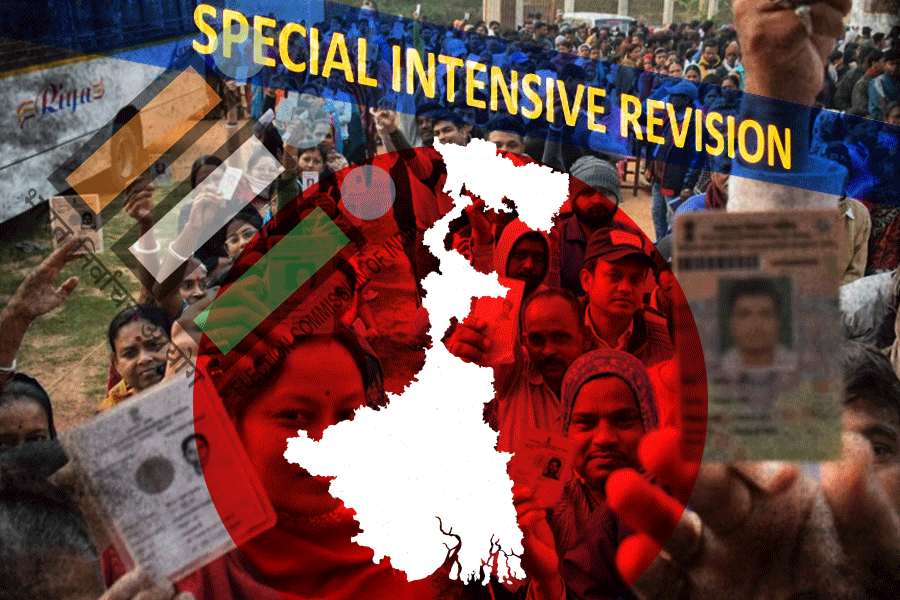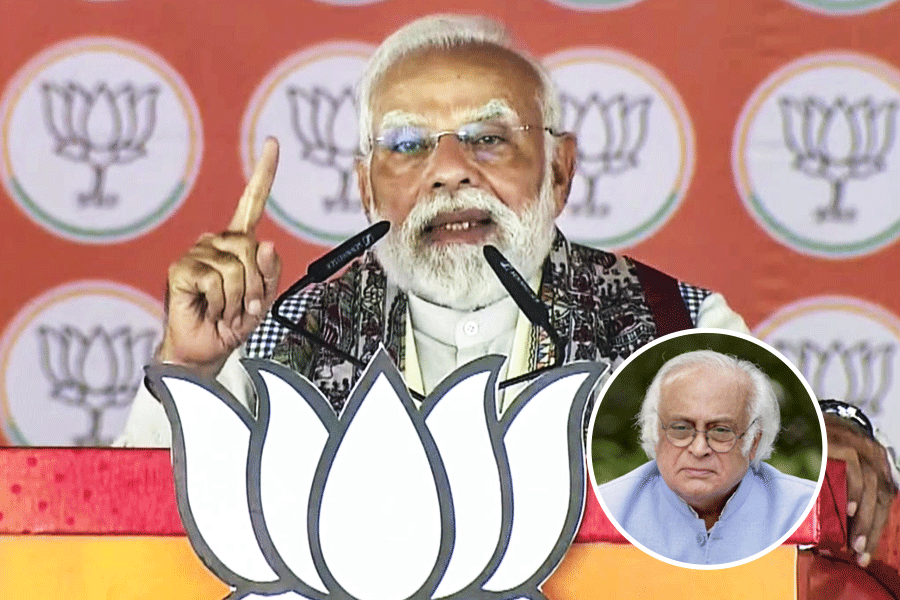 |
A sense of disquiet hangs over the morning music classes in the wooded, 100-acre grounds of Kalakshetra in Chennai. The recently constructed Padma Pushkarini, a lotus pond circled by stone mandapams, lies barren, while the renovations to the Koothambalam theatre seem to have been abandoned.
Students and lecturers edge away with alarm if you question them about recent developments in the cultural centre leading to the resignation of its director, dancer-choreographer Leela Samson. Finally, a student opens up. “We wanted Leela Samson back because she used to address our problems. It is not the same without her,” the student says. “I will get thrown out if I speak to you; please don’t mention my name.”
Earlier this month, the Madras High Court stayed a Central government decision re-appointing Samson as the director after she’d resigned in June. The judgment came in response to a petition filed by some Kalakshetra employees who had protested against the government move.
Samson’s seven-year tenure is now being dissected. In 2005, she was chosen to head the 76-year-old institution — set up by dancer-visionary Rukmini Devi Arundale to revive the languishing art form of Bharatnatyam. Samson, an alumna, took over at a time when — as she said — Kalakshetra’s place in the world of dance had slipped, the government’s corpus funds lay unused and teachers’ unions held sway.
Today she has been accused of a host of misdeeds. Samson, who also heads the Central Board of Film Certification and the Sangeet Natak Akademi, has been charged with diluting the style of the founder and promoting other styles of Bharatnatyam, among other things.
A petition filed last month by Sai Shankar, assistant professor of music, and other staffers, alleges that “several irregularities” were committed during her tenure as director, which were raised by a government audit report.
 |
| PARADISE LOST: The Kalakshetra Foundation campus, Pic: Kalakshetra Archives , Leela Samson (above) and board chairman Gopal Krishna Gandhi (below) |
The audit questions irregularities in contracts she signed with cinematographer Madhu Ambat to film documentaries; attempting renovations of the Koothambalam, the hostel kitchen and the purchase of sound equipment without following established tender procedures; and making irregular appointments without the ministry’s approval. “… On coming to know about the report of audit, she immediately tendered her resignation to the ministry of culture (in April),” the petition states.
The government accepted the resignation. The staff welcomed it since they had been “totally ignored, insulted, neglected and humiliated” for seven years, says the petition.
Samson stresses that she has “no desire to continue” as the head of Kalakshetra, which is now being run by an IAS officer, Karunakar Menon, whom she had appointed as her deputy director. “It is a bad precedent for teaching staff to interfere in administrative matters. They do not for a minute question their own appointment or that of their spouses,” she says in an email interview (she was overseas then) to The Telegraph. And an audit, she stresses, is not the business of teachers.
“There is a board, with ministry representation on it, that reviews administrative matters, a chief accounts officer who looks after the accounts and a deputy director from the railways who is a competent officer, in the know of governmental procedures. I was the artistic director. Therefore it is incumbent on the others to guide me and for us to work as a team, which is what we did,” she says.
 |
The petition also raised the issue of age. Samson, it says, continued to be director after turning 60 last year. In reply, the culture ministry clarified that the Kalakshetra Foundation is a corporate body created by the government. Moreover, since Samson is a contractual appointee and an upper age limit for continuation in office is not spelt out, the rules of superannuation as applicable to other government employees cannot be applied to her.
Once this was made clear, the governing board passed a resolution requesting the ministry to amend the rules to allow Samson to be re-appointed after turning 60. Though the staff submitted petitions to the Kalakshetra board chairman, former West Bengal governor Gopal Krishna Gandhi, and the ministry protesting against the move, she rejoined on June 29, informing the office that she had withdrawn her resignation.
“This created chaos and confusion among the staff and they decided to approach the court,” says R.T. Shyamala, the lawyer representing the staff members. Earlier this month, the Madras High Court, quoting from earlier Supreme Court judgments, maintained that once a resignation was tendered and accepted, the person could not withdraw it.
Samson’s withdrawal of resignation stands invalid. But confusion continues to reign whether she is the director or not. Gandhi says the board is set to meet in September. Asked if a search committee has been set up to look for a new director, he replies that the committee will be set up “whenever a vacancy arises in that position”.
Gandhi, who has been named as a respondent in the case filed by the Kalakshetra employees, maintains that he was unaware of the ministry’s decision to reinstate Samson.
Kalakshetra is no stranger to controversy. In 1986, a few executive committee members, who had guided the founder to set up the institution, had hauled Rukmini Devi to court for converting Kalakshetra from a society into a trust. The situation worsened after her death that year, finally leading to a takeover by the central government under the Kalakshetra Foundation Act in 1993. Kalakshetra became an autonomous body under the ministry of culture.
Despite the upheavals, the institute has been seeking to propagate the Kalakshetra “spirit” — described by G.K. Gandhi as the “quality of restraint” and “a natural poise and quiet dignity” exhibited by teachers and students.
“You learn about life through dance at Kalakshetra,” says Shanta Dhananjayan, Bharatnatyam dancer and senior Kalakshetra alumna.
The centre emerged during a time of intellectual ferment. Set up after Rukmini Devi’s debut performance at the Theosophical Society in Adyar, it reflected the philosophy of the theosophists, among them the dancer’s husband, George Arundale.
Of course, the centre is no longer what it was in its heyday, when it was led by the dynamic Rukmini Devi. “When I think of Rukmini, I think of love,” says A. Janardhanan, former principal and professor emeritus at Kalakshetra. The Kalakshetra style has diluted with time because old teachers have all left. “But with time, this is natural,” says Janardhanan, who joined Kalakshetra in 1958 when he was 14.
Shantha, who joined the centre when she was eight, remembers her old teachers resting in the afternoon, with a veena balanced on their chest, strumming melodious tunes. She scoffs at the idea of retiring teachers at 60. “Students need to be taught the finer sensitivity of dance which comes with age,” she says.
Samson, most concur, is an excellent dancer and teacher. The problem, says an old associate of Kalakshetra, is that she has not been able to take senior people along with her . “She is a brilliant teacher and should have stuck to that. But she was pitchforked into an administrative role.”
She has her share of supporters too. The group rooting for Samson holds that she is “a victim of jealousy” and has been hounded over petty issues. “Leela is a purist in her own right. She was already harangued for being a Jewess and there were people who wanted positions,” a senior consultant at Kalakshetra says.
But the consensus is that the institute that occupies a special place in the world of arts has to carry on. “At the end of the day, the institution is bigger than the individual,” says Kalakshetra board member and dancer Ambika Kameshwar. “We have to ensure that the troubles besetting Kalakshetra get sorted out.We need to see how we can carry Rukmini Devi’s vision forward.”











